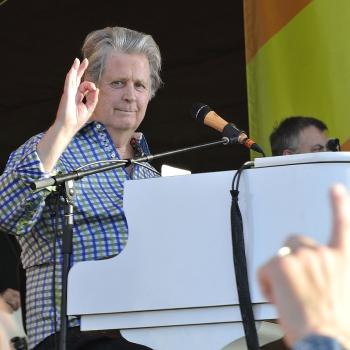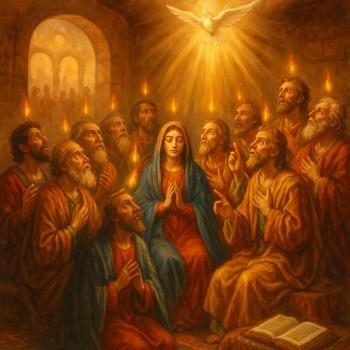The Adventurous Lectionary – Second Sunday of Easter – April 3, 2016
Acts 5:22-27; Psalm 150; Revelation 1:4-8; John 20:19-31
Let the Easter celebrations continue! Resurrection is a present and future as well as past reality. Christ the Lord is risen today, and every day! Resurrection is just a breath away!
Psalm 150 describes a world of praise. We can dance and sing, play drums and tambourines, hire a piper, and even a synthesizer and orchestra! But, not just us, for humanity is part a larger universe of celebration. The Psalmist proclaims, “Let everything that breathes praise God.” God is in all things; and all things are in God. We live in a dynamic, spirit-filled universe. Value resides in flora and fauna. God’s sighs too deep for words speak through the non-human as well as human world.
This Sunday, I will read the gospel in two parts. We begin with breath, focusing on John 20:19-23. On Easter night, Jesus mysteriously appears, apparently defying the laws of physics, and breathes new life into his followers. They have heard the message that Christ is risen; yet, they are still stunned and overwhelmed, not knowing the meaning of resurrection. But, now the Risen One is with them. He breathes on them, filling them with God’s Spirit and endowing them with power, creativity, and authority.
Breath is essential to the Hebraic and Christian visions. Genesis 1 describes God’s initial creative act as breathing over a chaotic void, bringing forth the possibility of the emerging and evolving universe. God breathes into humankind, animating what was before inert. Everything that breathes can praise God. In fact, after Easter, for Jesus’ first followers, every breath is a prayer.
Jesus breathes the Spirit into his followers. Having received the Holy Spirit, they can now go out into the world, living the good news and making every day the Pentecost. Divine revelation includes dramatic mystical moments, not to mention speaking in tongues and healing touch. However, the primary mode of divine revelation, indeed, the most essential revelatory moments are as undramatic as breathing. Revelation is found in sharing breath with creation and taking our role as healers of creation. Let us commit ourselves to God’s resurrection power with every breath.
The passage from John’s gospel now turns to focus on one of the most faithful of disciples, Thomas. This Sunday, I am sure that Thomas will be the object of criticism among many preachers and the focal point of many a bad sermon – or rather a simplistic sermon – that will center on Thomas’ inability to belief Jesus has risen from the dead and counsel us to believe without evidence or encounter with the Risen Jesus. In contrast, I believe that Thomas demonstrates one vision of a healthy faith.
Let’s look at the story once more. When Jesus appears to Jesus’ followers, Jesus is not present. He returns to what an outsider might view as a mass hallucination, brought on by shock and grief. Everyone’s overjoyed except Thomas. No doubt, he felt totally out of place, like a progressive at a Trump or Cruz rally, or a social democrat surrounded by Tea Party members. Yet, Thomas does something amazing. He doesn’t abandon the cause of Jesus, nor does he deny the resurrection. He simply wants to experience Jesus’ presence, to know that Jesus is alive, before he believes.
One of the most pivotal books in my religious journey involved reading Paul Tillich’s Dynamics of Faith. From Tillich, I learned that doubt was an essential part of faith and not a sign of infidelity. We doubt the most important things because our life depends on them and because they involve what ultimately lies beyond the circle of verification and falsification.
Thomas’ doubt is a quest for faith. It is not doubt for doubt’s sake. When he finally encounters the Risen Jesus, he is transformed and eventually journeys to the East to share the Gospel in India. Yet, the Jesus he encounters is still amazing to us. In a world where God is identified with power, and some see Christ as coming down from heaven to destroy the earth, the Jesus Thomas discovers is known by his wounds. God in Christ suffers and still suffers the pain of crucifixion. God in Christ is still wounded. God identifies with the pain of Jesus, indeed, feels Jesus’ pain intimately, and God also identifies with our pain. How can the One who embraces our world’s joy and suffering imagine destroying the world? How can the One who felt Jesus’ pain on the Cross, and every child’s cry – the cry of starving child, the hopelessness of a parent whose child is gunned down on a city street, the refugee family – have any desire to inflict more suffering on the earth and its peoples.
Easter is embodied. It is known by God’s breathing in us. It is known by embracing the pain of our world. In God’s love for the world, God enables us to have the stature to become God’s partners in healing the world, practicing resurrection with each new day.











